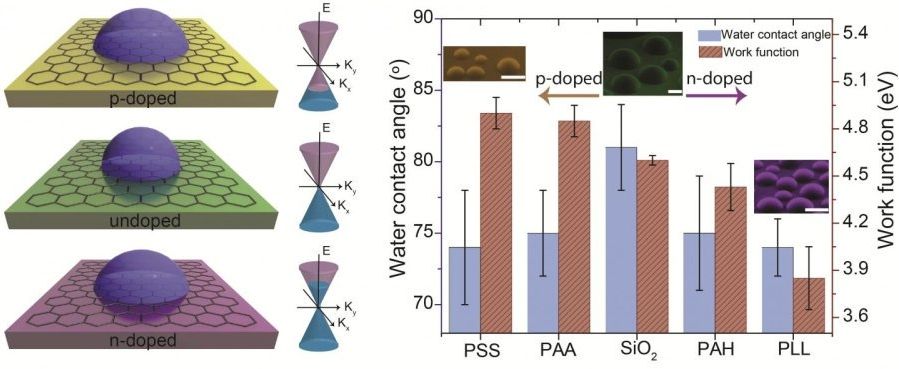Nice.
“Our study suggests for the first time that the doping-induced modulation of the charge carrier density in graphene influences its wettability and adhesion,” explained SungWoo Nam, an assistant professor in the Department of Mechanical Science and Engineering at Illinois. “This work investigates this new doping-induced tunable wetting phenomena which is unique to graphene and potentially other 2D materials in complementary theoretical and experimental investigations.”
Graphene, being optically transparent and possessing superior electrical and mechanical properties, can revolutionize the fields of surface coatings and electrowetting displays, according to the researchers. A material’s wettability (i.e. interaction with water) is typically constant in the absence of external influence and are classified as either water-loving (hydrophilic) or water-repelling (hydrophobic; water beads up on the surface). Depending on the specific application, a choice between either hydrophobic or hydrophilic material is required. For electrowetting displays, for example, the hydrophilic characteristics of display material is enhanced with the help of a constant externally impressed electric current.
“What makes graphene special is that, unlike conventional bulk materials, it displays tunable surface wetting characteristics due to a change in its electron density, or by doping,” said Ali Ashraf, a graduate student researcher and first author of the paper, “Doping-Induced Tunable Wettability and Adhesion of Graphene,” appearing in Nano Letters. “Our collaborative research teams have discovered that while graphene behaves typically as a hydrophobic material (due to presence of strongly held air-borne contamination on its surface), its hydrophobicity can be readily changed by changing electron density.
